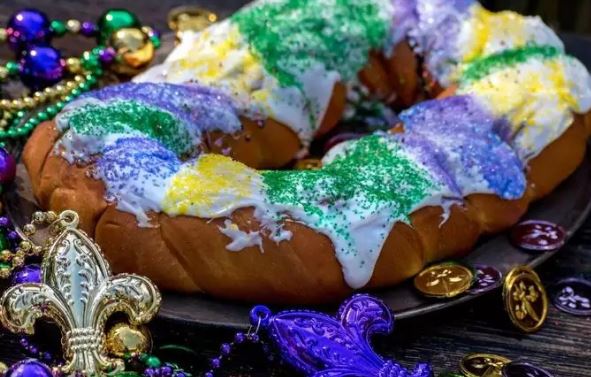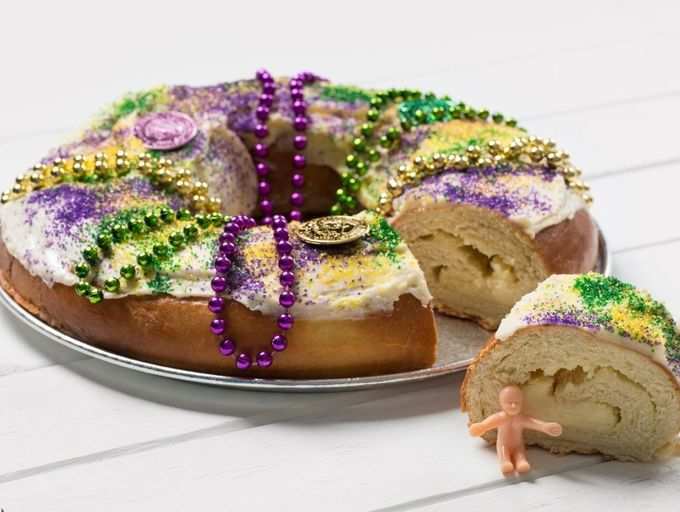
There are numerous dishes around the world that are not known to many of us because they belong to a particular food tradition or culture.
These traditions and cultures are such that they are contained within a limited number of people, their recipes being passed on from one generation to another.
Though not many of us are aware of these dishes, there is no doubt about the fact that they are absolutely mouthwatering.
One such dish is the ‘King Cake’. If you haven’t heard or read about it ever before, here is a look at all you need to know about the dish.
What is King Cake?

A king cake is a loop-shaped cake that is similar to a Danish pastry and traditionally made of brioche, flavoured with cinnamon, and decorated with a frosted glaze and gold, green, and purple sugars.
The cake is made as a part of the Mardi Gras, which refers to events of the Carnival celebration, beginning on or after the Christian feasts of the Epiphany (a Christian feast day that celebrates the revelation of God incarnate as Jesus Christ) and ending on the day before Ash Wednesday, which is known as Shrove Tuesday.
The three sugar shades (gold, green, and purple) are the official Mardi Gras colours, and each one of them has a specific meaning. Gold stands for power, green represents faith, and purple represents justice. In the United States the principal Carnival celebration is in New Orleans, Louisiana.
The origins of King Cake

The roots of King Cake can be traced back to France. When French settlers came to Louisiana, they brought over their festive traditions, such as Carnival, which became Mardi Gras. France still has a king cake of its own known as a “Galette des Rois.” It is a subtly decorated puff pastry with an almond cream known as frangipane and is also enjoyed by the French around the time of the Epiphany.
The reason behind the plastic baby inside King Cake

Yes, there is a small plastic baby hidden inside the King Cake! Originally, a bean was hidden inside the cake. Legend has it that if you received the piece of cake with the bean in it (which later became a plastic baby) you would get to be king for the day.
It was a commercial bakery called McKenzie’s that popularized the plastic baby that was baked into cakes back in the 1950s. They were originally made of porcelain but later swapped with a plastic version. These days, the person who finds the plastic baby in his/her share is responsible for buying the next King Cake.
King Cakes in other countries

A common denominator between all of the King Cakes is that they all have a small trinket or figurine (bean, a coin, a nut, or a tiny baby figurine) hidden inside. Whoever finds the trinket in their slice of cake gets to be “king” for a day and is also said to have good luck.
Here is a look at some King Cakes from other countries.
1. “Rosca de Reyes”: Served in Spain and Latin America, it is a ring-shaped sweet bread that can also be topped with candied fruit and a light layer of icing.
2. “Bolo Rei”: The Portuguese version of King Cake, it is also ring-shaped and is filled with candied fruit and sometimes nuts.
3. “Banitsa”: It is generally served in Bulgaria on New Year’s Eve, and also on other special occasions like weddings or festivals. It consists of sheets of phyllo dough wrapped around soft cheese.
4. “Vasilopita”: Served in Greece and Cyprus on New Year’s Day, it closely resembles the French galette. It is round and flat with almonds on top that sometimes denote the year. Vasilopita also usually has a coin baked into it.

